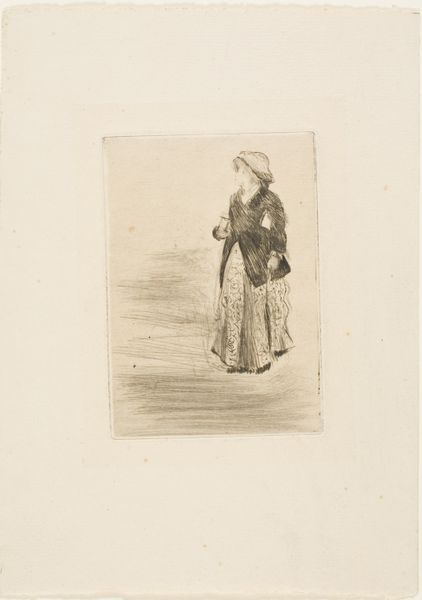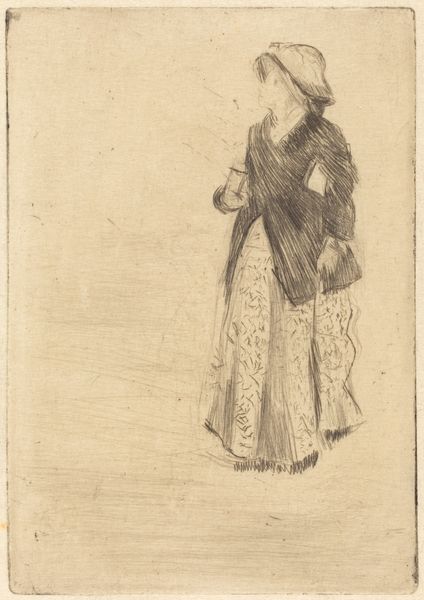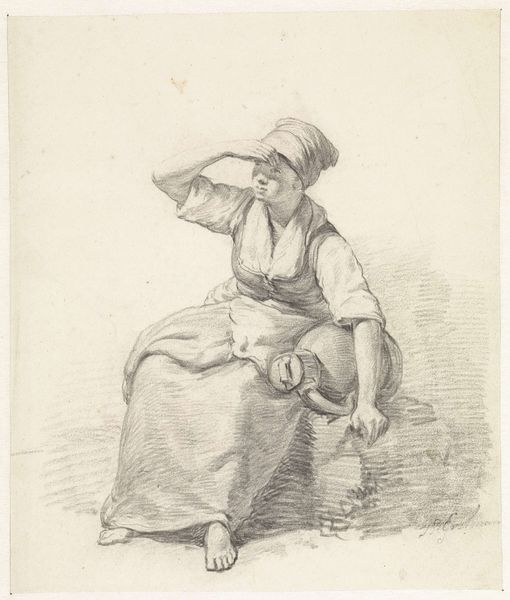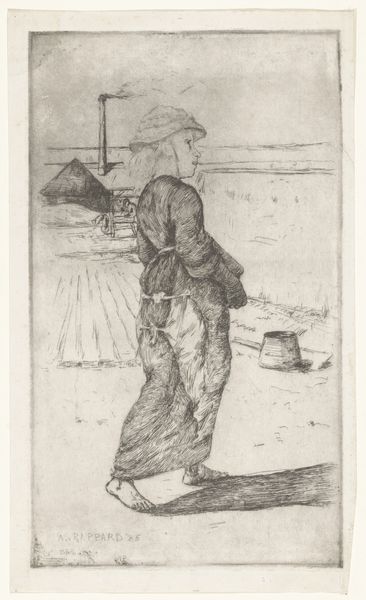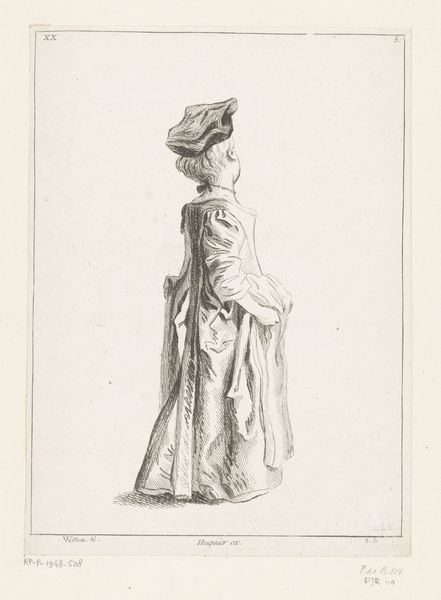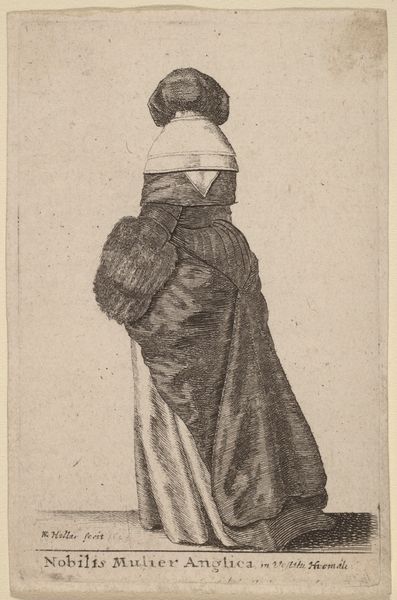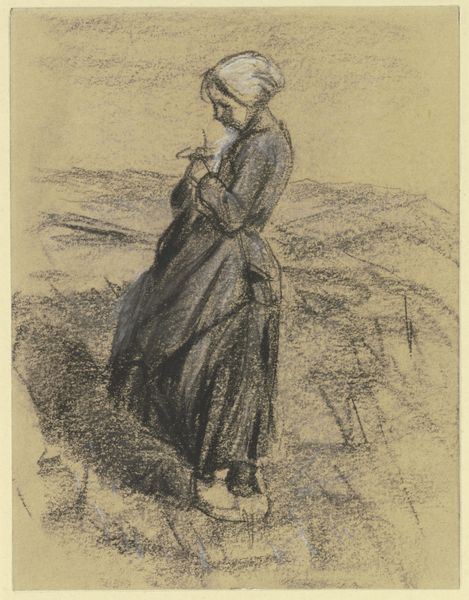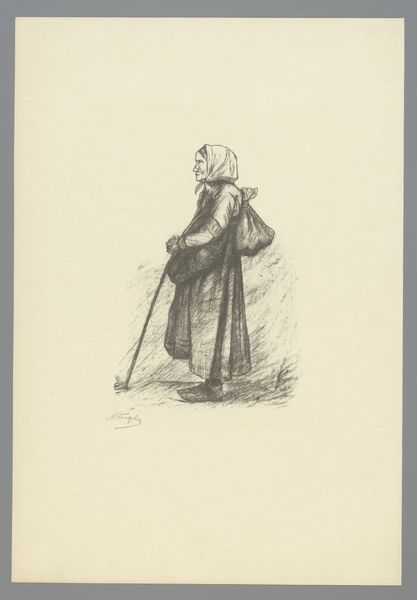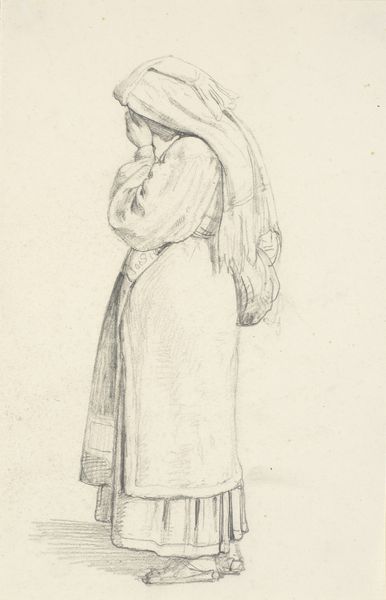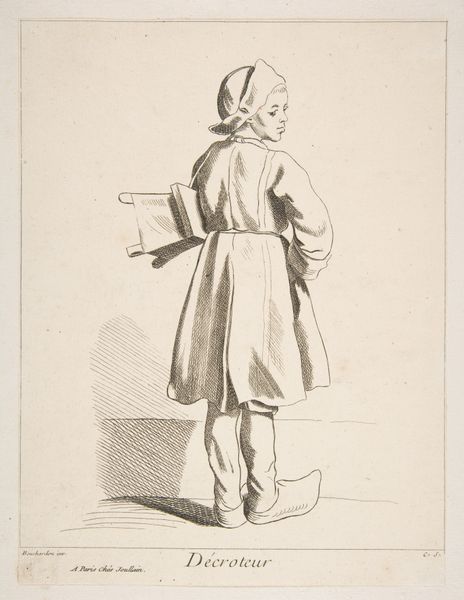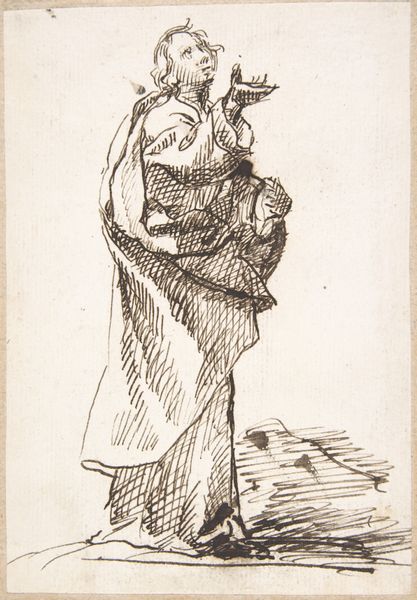
drawing, pencil
#
portrait
#
pencil drawn
#
drawing
#
aged paper
#
light pencil work
#
pencil sketch
#
old engraving style
#
personal sketchbook
#
pen-ink sketch
#
pencil
#
line
#
sketchbook drawing
#
pencil work
#
genre-painting
#
sketchbook art
#
realism
Dimensions: height 146 mm, width 107 mm
Copyright: Rijks Museum: Open Domain
Curator: Looking at this piece, "Vrouw met een cape staand naast een rieten mand," or "Woman with a cape standing next to a wicker basket," a drawing by Isaac Weissenbruch created sometime between 1836 and 1912, now residing here at the Rijksmuseum... there's a delicate weariness about it. Editor: Yes, the lightness of the pencil strokes, almost like whispers on aged paper. You can sense a story etched into every line. I wonder, what burdens does she carry under that cape? It speaks volumes, doesn't it, about the quiet struggles often faced by women of that era. The sketch format is fascinating, making me wonder whether the woman might even be real. Curator: It’s quite intimate. Like peeking into the artist's private sketchbook. It makes me wonder about her station in life; her clothes indicate she isn't affluent, her expression thoughtful as she stands beside her basket. Weissenbruch isn't attempting some grand statement here but more a meditation on everyday existence. Or perhaps even an actual street scene! Editor: Exactly. It grounds the work. Consider the era's social hierarchy. Weissenbruch might be highlighting the working class. This humble portrayal acts as a potent counterpoint to the more idealized depictions. Even that simple basket is loaded, a symbol of labor, perhaps even economic survival for some. This piece, beyond its aesthetic qualities, serves as an entry point into a complex web of historical power dynamics. Curator: I also see a profound grace in the face that can’t be seen. The hidden expression invites speculation and a certain tenderness, if I may say. I do wonder about the placement of the figure in relation to the empty basket. Is this basket waiting to be filled? What does filling it signify? Does emptiness suggest something as well? The mystery makes you linger on details. Editor: I am in agreement, and I feel the woman becomes every woman forced into certain social-economical roles based on a highly stratified social class. Through a lens focused on realism we get a quick lesson on power, labor and societal norms. Curator: The piece continues to fascinate even after the most rigorous art-historical and theoretical assessment. It makes the mind reel to conjure who the woman was and whether she felt the grace I imagined when observing her profile. Editor: Yes, the dialogue between art and society resonates powerfully. Her story echoes through history, and as an observer, the goal isn’t simply aesthetic but one of cultural understanding.
Comments
No comments
Be the first to comment and join the conversation on the ultimate creative platform.
